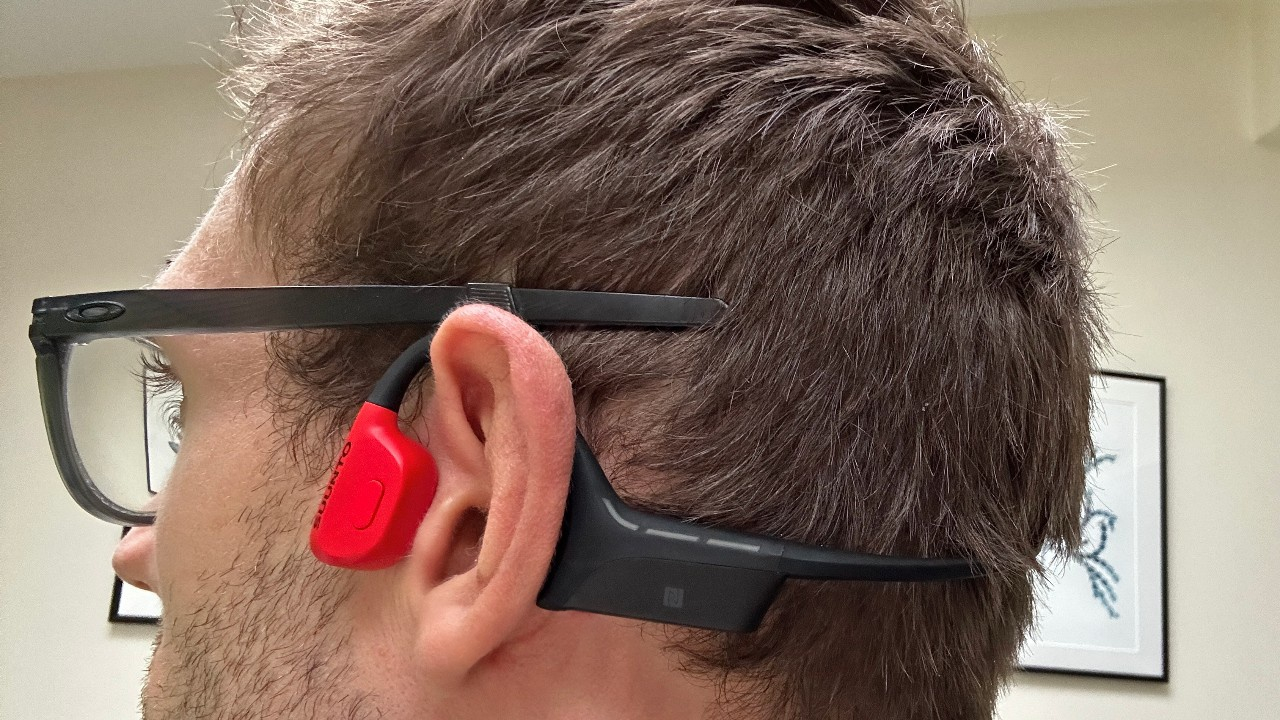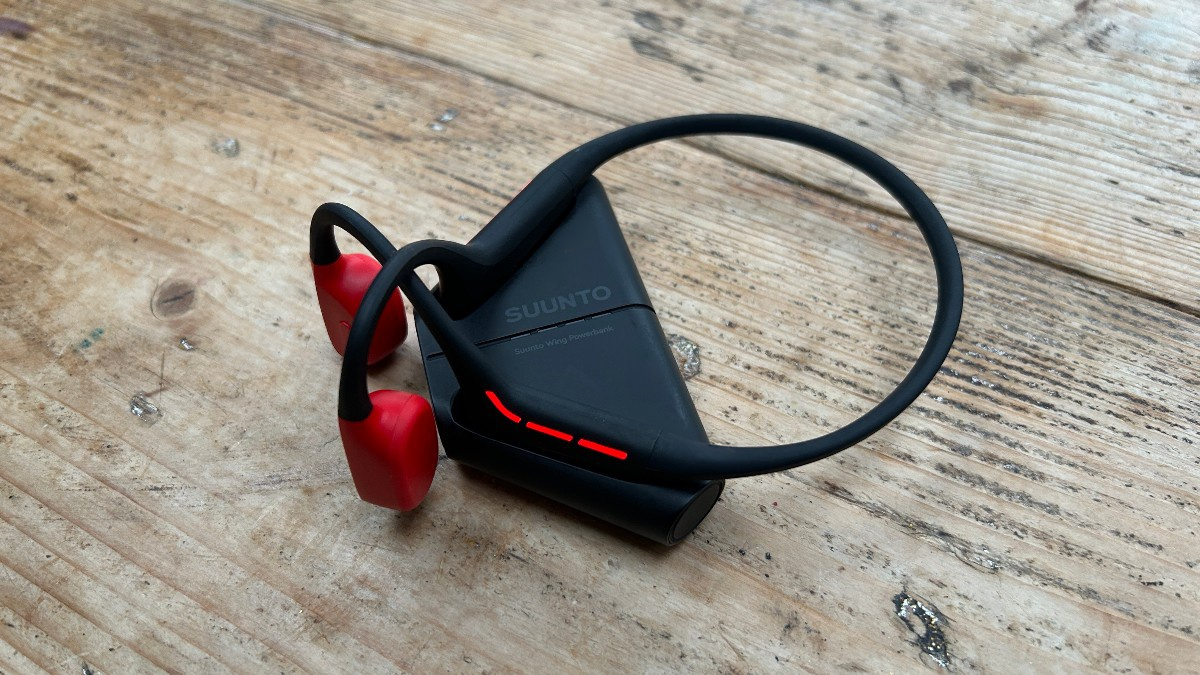Our Verdict
Suunto’s first set of bone conduction headphones are solid performers, but they just don’t stand out next to options from established brands like Shokz—and they cost significantly more, making them hard to recommend.
For
- Long battery life
- Secure fit
- Lights
- Portable charger
Against
- More expensive than others
- Sometimes too quiet
You can trust Coach
Suunto’s Wing are the first set of headphones made by the Finnish brand, which is mainly known for making sports watches.
There’s little to fault about the performance of the bone conduction headphones, and they stand up well against competition from the best workout headphones. Indeed, the headphones have clever features I’ve not seen on other bone conduction sets, like a portable powerbank and flashing light-indicators on the headphones. However, their price is too high. The Shokz OpenRun, in particular, offer better value if you want bone conduction buds.
Suunto Wing: Price And Availability
The Suunto Wing headphones launched in October 2023 and cost $199.99 in the US and £169.99 in the UK. This is more expensive than other bone conduction headphones I’ve tested. The Shokz OpenRun Pro are the most expensive Bluetooth bone conduction buds in the Shokz range and cost $179.95/£159.95, while the OpenRun are $129.95/£129.95.
How I Tested These Headphones

I’ve been using the Suunto Wing as my main headphones for two weeks, and have logged several runs in them, along with a couple of strength sessions and bike rides. I have also tested the entire Shokz range, along with many bone conduction and open headphones from other brands.
Design And Fit
The Suunto Wing are bone conduction headphones that hook over the ear, so pads rest on your cheekbones to deliver audio via vibrations that travel through your bones. This leaves your ears clear to hear external sounds, which is why bone conduction headphones in general have become popular with people who exercise outdoors and want to stay aware of what’s going on around them.
They are fairly light at 33g, with a case made from silicone and titanium alloy, and I found they rested comfortably on my ears throughout runs, even when I was also wearing glasses and a hat. The band sticks out beyond your head, though, which means I pressed against it when I lay on my back for exercises during strength workouts.
The headphones are rated IP67, so they’re water- and dust-proof, although they don’t have internal storage so you can’t use them for swimming. The Wing headphones can support two Bluetooth connections at once, and I found they switched seamlessly between my laptop and phone when connected to both.
Sign up for workout ideas, training advice, reviews of the latest gear and more.

There are two buttons on the right side of the headphones that are used to turn them on/off and raise/lower the volume, and a multi-function button on the left pad that you can use to control music and answer calls.
The Suunto Wing are charged by putting them into a powerbank. This is the first powerbank I’ve seen for bone conduction headphones and it makes them easier to charge on the move. The powerbank itself is IP55-rated, allowing you to put it in a running belt or rucksack without worrying that rain or sweat will damage it. The headphones come with a clip to hold them in the powerbank.
The red LED lights on either side of the headphones are another novel design element, and one that makes you more visible when using them at night. They can be set in the partner app to be on constantly or to flash. You can even set them to flash in the morse code pattern for SOS. They’re turned on or off by holding the volume down button.
Sound Quality
You don’t buy bone conduction headphones for their sound quality, which necessarily suffers from the open design. The Suunto Wing are no exception, and there’s not much bass from the buds, which can also be too quiet to hear when running by busy roads. The clarity isn’t amazing either and there is distortion at high volume—you even get a little cheek tickle from the buds when you raise the volume near the max.
The buds don’t sound bad, and are equivalent on this front to the Shokz OpenRun and OpenRun Pro headphones, but if you want better sound quality you can easily find it on cheaper in-ear buds, or open headphones that have a speaker near the ear, like the Cleer Arc II or Shokz OpenFit.

In the partner app you can choose from two sound modes, normal and outdoor, and the latter reaches a higher volume for noisy environments. The modes didn’t sound different to me, and the Wing headphones are still too quiet for noisy environments in outdoor mode.
For sports use, the Suunto Wing have good enough sound quality with the added benefit of extra awareness. But they’re not headphones I enjoyed using outside workouts, and the open design means they aren’t much use for travel—when external noise often drowns out the audio.
Battery Life
The Suunto Wing headphones last 10 hours on a charge and the powerbank adds another 20 hours. If you’re caught short of battery, give the buds 10 minutes in the powerbank and they will last three hours, which is excellent.
This powerbank is the feature that might make the Suunto Wing worth the extra cost compared with other bone conduction headphones, which need to be plugged in to charge. You could carry a portable battery and a cable to charge the likes of the Shokz OpenRun, I suppose, but Suunto’s powerbank is an elegant solution that rivals the charging cases of wireless in-ear buds. If you regularly tackle long bike rides or run ultra-marathons, the charger will be handy.
Controls

Along with the button controls on the buds, which work reliably and are easy to use during workouts, there are motion controls you can enable on the Suunto Wing. Turn these on and you can nod your head to answer a call, or shake your head to reject it. You can also shake your head twice to skip to the next song. This last control can be useful at times, yet it’s not without its problems. Sometimes it failed to recognise my head shakes despite repeated attempts; at other times it skipped tracks during my runs when I didn’t mean to. Given that you can skip songs by pressing the multi-function button twice, the motion gesture felt too hit-and-miss to me, so I turned it off.
Are The Suunto Wing Worth It?
The Suunto Wing are great bone conduction headphones with some useful features. However, none of these are essential, and you can get bone conduction headphones that fit just as well and sound just as good for considerably less. The Shokz headphones are also lighter and the OpenRun Mini version comes with a smaller band that fits closer to your head, which is useful in strength workouts where you lie down for exercises.
The powerbank is an elegant portable charging solution that will appeal to some, but for most users it won’t be that much more convenient than charging with a cable. If the price drops in sales, the Suunto Wing are worth checking out, but while they’re $200/£170 it’s too easy to find better value elsewhere.

Nick Harris-Fry is a journalist who has been covering health and fitness since 2015. Nick is an avid runner, covering 70-110km a week, which gives him ample opportunity to test a wide range of running shoes and running gear. He is also the chief tester for fitness trackers and running watches, treadmills and exercise bikes, and workout headphones.

